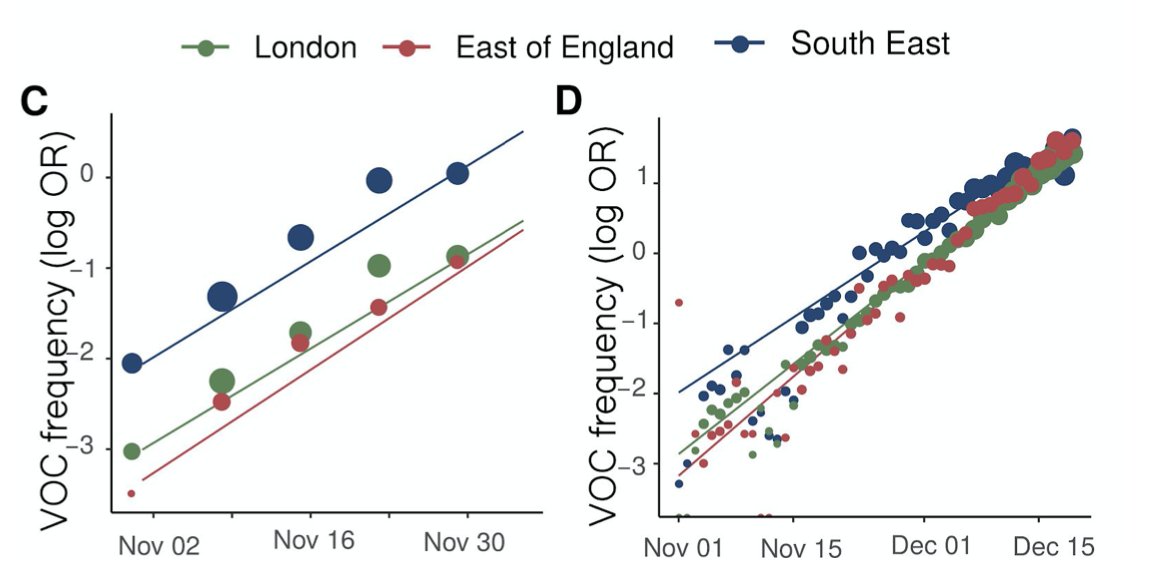
A few thoughts on the B.1.617 variant, first seen in India in late 2020, recently seen in >100 cases in the UK, and very much in the news here. TLDR: we should watch carefully, but I don't think any of our best lines of evidence on variants are yet cause for concern. 🧵
In the "variant era", there are 4 kinds of evidence we can use to evaluate a new variant: (1) how fast it is spreading in different places, (2) pre-existing info about specific mutations it carries, (3) lab experiments (ACE2 binding, Ab evasion, etc), (4) real world vaccine data.
3 & 4 are very important (at the end of the day, arguably all that matters is vaccine efficacy), but take time, even when labs around the world are focusing on these questions. I haven't seen anything yet on B.1.617, so won't comment further.
So what about spread? Well, I don't think we really know yet. B.1.617 has become more common in India at around the same time as the recent huge & tragic wave of cases, but <1000 sequences have been reported in GISAID out of ~4M cases since mid-February.
I don't know much about the sampling strategy of INSACOG, the group doing the sequencing, but with these numbers, lots of different biases could paint an inaccurate picture, and I would definitely not draw conclusions about cause and effect of the current wave without more data.
(e.g. as @theosanderson tweeted, geographic distribution of sequences doesn't match case numbers in recent data
https://twitter.com/theosanderson/status/1383470985332936710?s=20)
Furthermore, this lineage has existed for months at low levels in India, and has been seen occasionally elsewhere. There's lots of caveats around different local conditions, but the fact that it hasn't grown sooner makes it likely to not be as transmissible as B.1.1.7 in my view.
If we turn to the UK, must remember that nearly all positive tests from recently returned travelers are sequenced. @SMHopkins implied this morning on @AndrewMarr9 that v. large fraction of UK B.1.617 cases so far are travel related, which is consistent with other VOCs & VUIs.
In terms of mutations, most attention is on E484Q and L452R in Spike. Both have shown evidence of reduced neutralisation by some monoclonal antibodies. But vaccine induced immunity is polyclonal and involves T-cell response. So I think it's not that likely that it truly "escapes"
Also, 484Q has not turned up in experiments selecting better ACE2 binding (and hence infectivity) compared to 484K. Plus B.1.617 is missing N501Y, which is a key factor increased binding for other VOCs and VUIs.
You can easily compare to other VOCs and VUIs at the very lovely outbreak.info/situation-repo…
We don't yet know B.1.617's role in the current situation in India. And I think there is evidence that it's not as problematic as other VOCs. Time will tell, and in some sense it doesn't matter: don't panic, keep vaccinating, avoid risky tranmission situations where you can.
• • •
Missing some Tweet in this thread? You can try to
force a refresh







